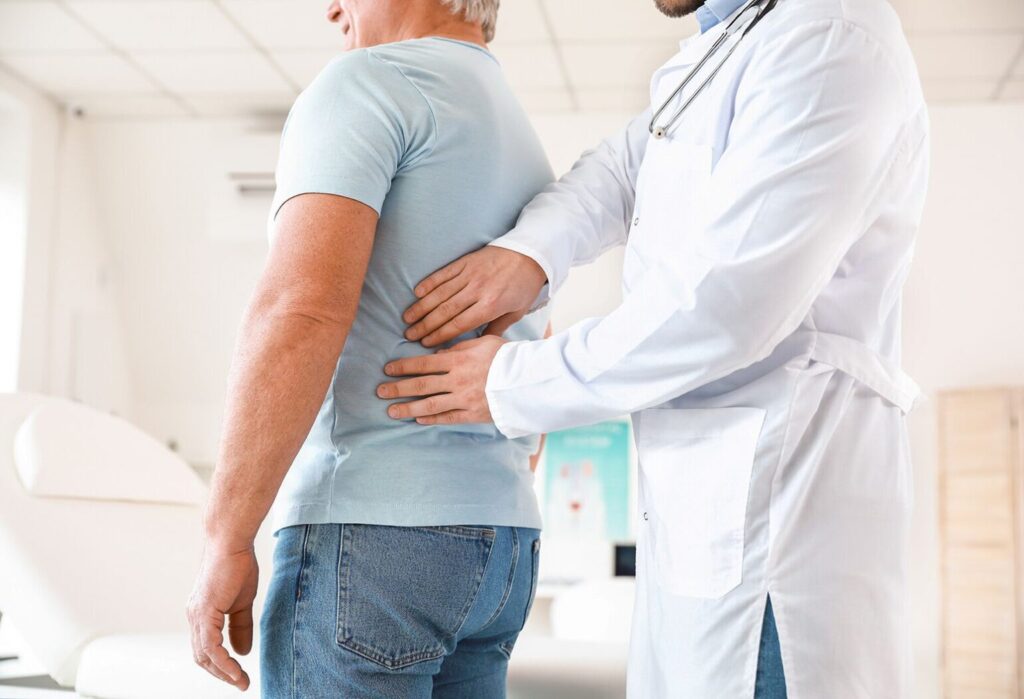Also known as benign prostatic hyperplasia (BPH, a histological diagnosis), is a common prostate problem for men over the age of 50. The prostate usually begins to enlarge after age of 40 and even after 30 in certain individuals. BPH causes urinary symptoms including straining to start urination, slow urinary flow or reduced force, hesitancy or interrupted flow and worsening ability to empty the urine out of the bladder. Occasionally this can be associated with urinary frequency and urgency, waking up more often at night to urinate. Dr Subodh Kamble is on the forefront of several innovative, natural BPH treatments, including Urolift and Rezume therapy.
It’s the most common condition. It is painful, sometimes cloudy or foul-smelling urine, often accompanied by urgency, frequency, burning and pain with urination and often occurring several times a year. Dr Kamble offers intravesical treatment for recurrent urine infections, and he is probably the only one in India offering this treatment which replaces the GAG layer. The medication isn’t available in India but Dr Kamble either obtains it from overseas or prepares his own.
Kidney stones forms when minerals and salts in the urine clump together as “stones,” as small as a grain of sand or as large as a golf ball. Smaller stones can often pass with the urine; larger stones may require medical and/or surgical treatment.
Hydrocoele could be congenital (since birth) or acquired in adult life. It is a collection of fluid in the sac containing the testicle. In children it can subside on its own till the age of 3 years, but may need repair after that. Most of the times it does not cause any trouble in adults apart from swelling, however it can become painful, cause problem with clothes and cosmetic problems. Sonography is necessary to make sure that there is pathology in the testicle such as cancer.
This is another term for having bladder control problems, or difficulty controlling when and how much a man urinates. Symptoms of an overactive bladder may include feeling an urgent need to use the bathroom which cannot be postponed, needing to urinate frequently, waking up several times at night to pass urine, and experiencing large or small leaks of urine. Some men may complain of feeling unable to empty the bladder completely.
This is an abnormality or impairment in the way the bladder works. Men may experience one or more types of dysfunction in the bladder. Bladder dysfunctions can include urinary incontinence. It is important that a man with a bladder dysfunction consult Dr Subodh Kamble to determine the root cause and work to treat it.
Bladder infection is a type of urinary tract infection (UTI), both of which most often occur in women but male can also suffer with this. When men have a bladder infection, depending on their ag the causes could be different. Particularly above 50 it might be a symptom of prostatitis or BPH. Bladder infections can cause pain or burning when urinating and result in an urge to urinate frequently.
These are hard masses of minerals that form in the bladder when urine becomes concentrated. They are most common in men age 30 and older. Bladder stones often occur because a man is unable to empty the bladder completely. This can happen during illness, after nervous system damage, or because of BPH.
This occurs when the urethra opening narrows at the tip of the penis. Meatal stenosis can exist from birth or be acquired, and is rarely seen in uncircumcised penises.
Urethritis (inflammation of the urethra) is usually caused by bacteria and treated with antibiotics. Pain with urination is the primary symptom.
This is scar tissue in the urethra that can block or reduce urine flow.
Epididymitis is an inflammation of the coiled tube (epididymis) behind each testicle that holds sperm before ejaculation. Men with this condition typically experience painful urination or intercourse, as well as blood in the urine or semen.
Hypogonadism in men occurs when the sex glands do not produce any hormones or produce reduced amount of hormones. This can often be treated with medications. Hypogonadism can also involve poor production of sperm, causing male fertility issues. It can also result in erectile dysfunction.
Testicular torsion occurs when one of the cords that secure the testicle in the scrotum twists around a testicle, cutting off its blood supply. Mainly experienced by males under age 25, particularly between age of 12 to 18 years. However older male can also experience this on rare occasions.
Varicoceles often form during puberty and are enlarged varicose veins in the scrotum. Up to 15 percent of men may have varicoceles, which are found frequently in men with infertility because it can cause low sperm production and decreased sperm quality as well as motility.
This occurs when a testicle has not moved from the foetus’ belly into his scrotum before birth. Most of the time the testicle descends on its own in the baby’s first three months. Learn more about undescended testicles in our paediatric urology section.
Prostatitis is inflammation of the prostate and is the most common prostate disorder for men under 50. A bacterial infection sometimes causes prostatitis, but often the cause is unknown. Primary symptoms are pain, burning with urination or ejaculation, as well as urinary urgency and increased frequency.
The medical name for painful bladder syndrome is interstitial cystitis (IC). It causes discomfort in the bladder or lower belly. Men may feel the need to urinate up to 60 times a day. They may feel as if their bladder is always full. This can be uncomfortable and upsetting. The urge to urinate can also be sudden and severe. It can interfere with everyday activities. Some men avoid social events or travel away from home. A Cronin prostatitis can also present as painful bladder syndrome.

